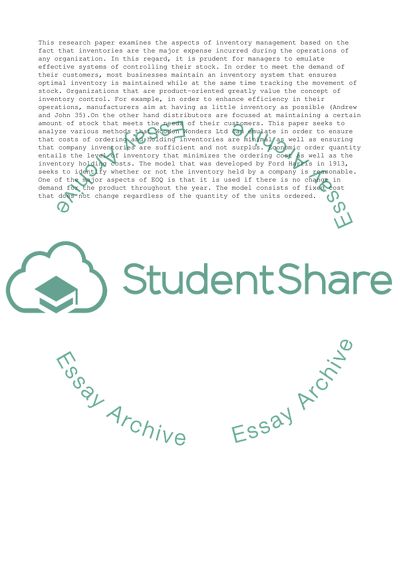Cite this document
(“Inventory Management Essay Example | Topics and Well Written Essays - 2500 words - 1”, n.d.)
Inventory Management Essay Example | Topics and Well Written Essays - 2500 words - 1. Retrieved from https://studentshare.org/management/1584601-inventory-management
Inventory Management Essay Example | Topics and Well Written Essays - 2500 words - 1. Retrieved from https://studentshare.org/management/1584601-inventory-management
(Inventory Management Essay Example | Topics and Well Written Essays - 2500 Words - 1)
Inventory Management Essay Example | Topics and Well Written Essays - 2500 Words - 1. https://studentshare.org/management/1584601-inventory-management.
Inventory Management Essay Example | Topics and Well Written Essays - 2500 Words - 1. https://studentshare.org/management/1584601-inventory-management.
“Inventory Management Essay Example | Topics and Well Written Essays - 2500 Words - 1”, n.d. https://studentshare.org/management/1584601-inventory-management.


